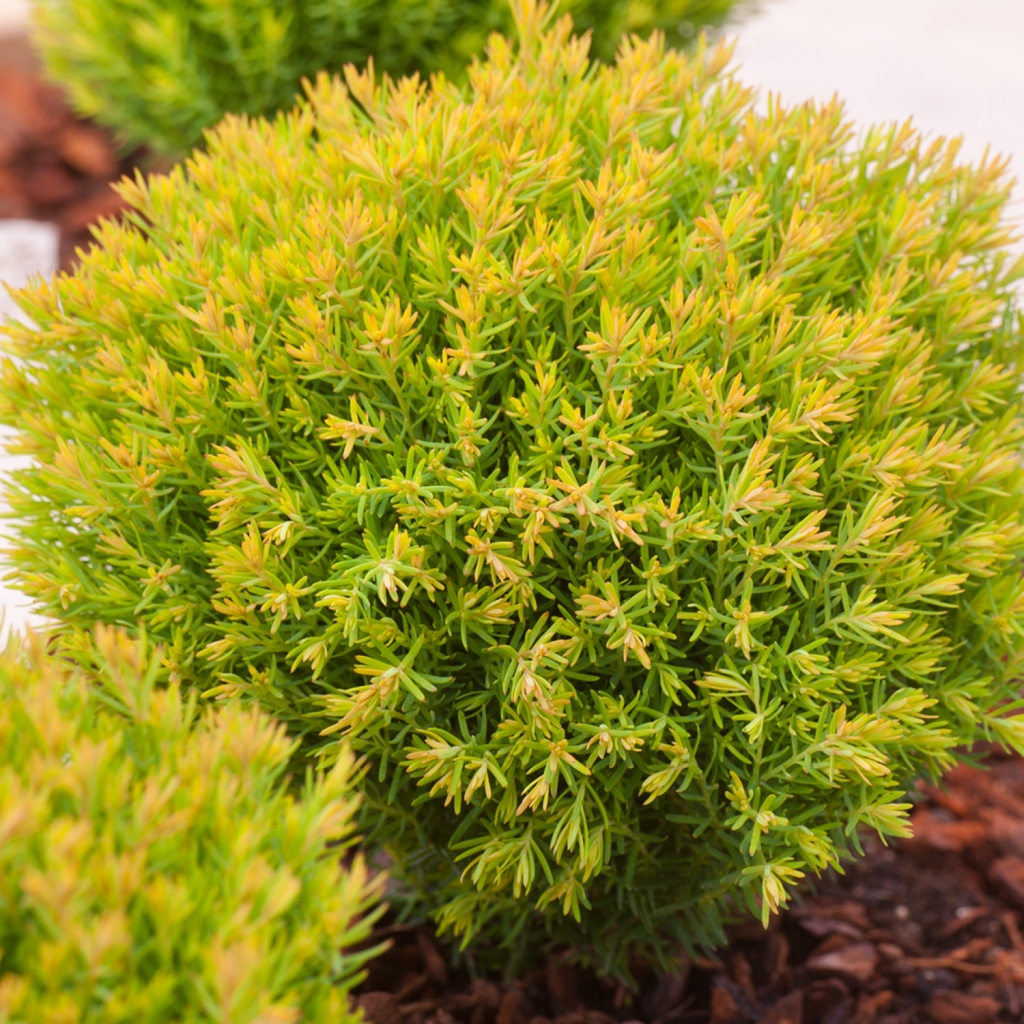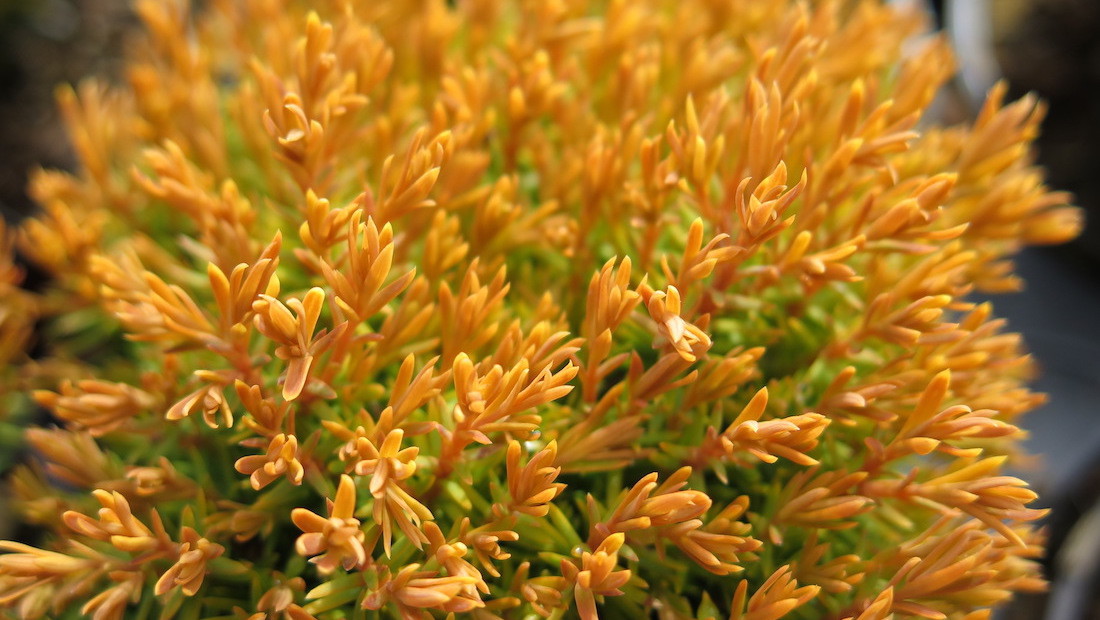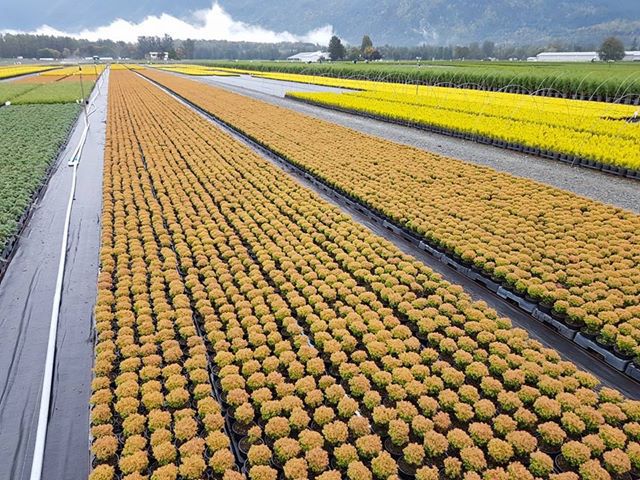Thuja occidentalis 'Anniek' is a relatively new selection of arborvitae that is currently marketed in the U.S. under the trade name Sienna Sunset„¢. It grows with a compact and globose shape; freely branching with extremely dense and bushy form. Its yellow-green juvenile foliage is quite soft to the touch; developing leaves are yellow green in color in the spring and summer, becoming bronze in color in the autumn and winter. After 10 years of growth, a mature specimen will measure 10 inches (25 cm) tall and wide, an annual growth rate of around 1 inch (2.5 cm).
This cultivar originated as a branch sport found in 2005 on a specimen of T. occidentalis 'Teddy' by Franciscus van Gils and Wlodzimierz Flejszer at a nursery in Skierniewice, Poland. Frans named the plant in honor of his daughter, Anniek. Breederplants Nursery Inc. of Reeuwijk, The Netherlands introduced it to the nursery trade in 2012.
The originators claim that this conifer, with its tighter branching, will be less prone to break open under the load of snow and ice in winter. 'Anniek' was granted plant patent, US PP22813 P2, in 2012.


